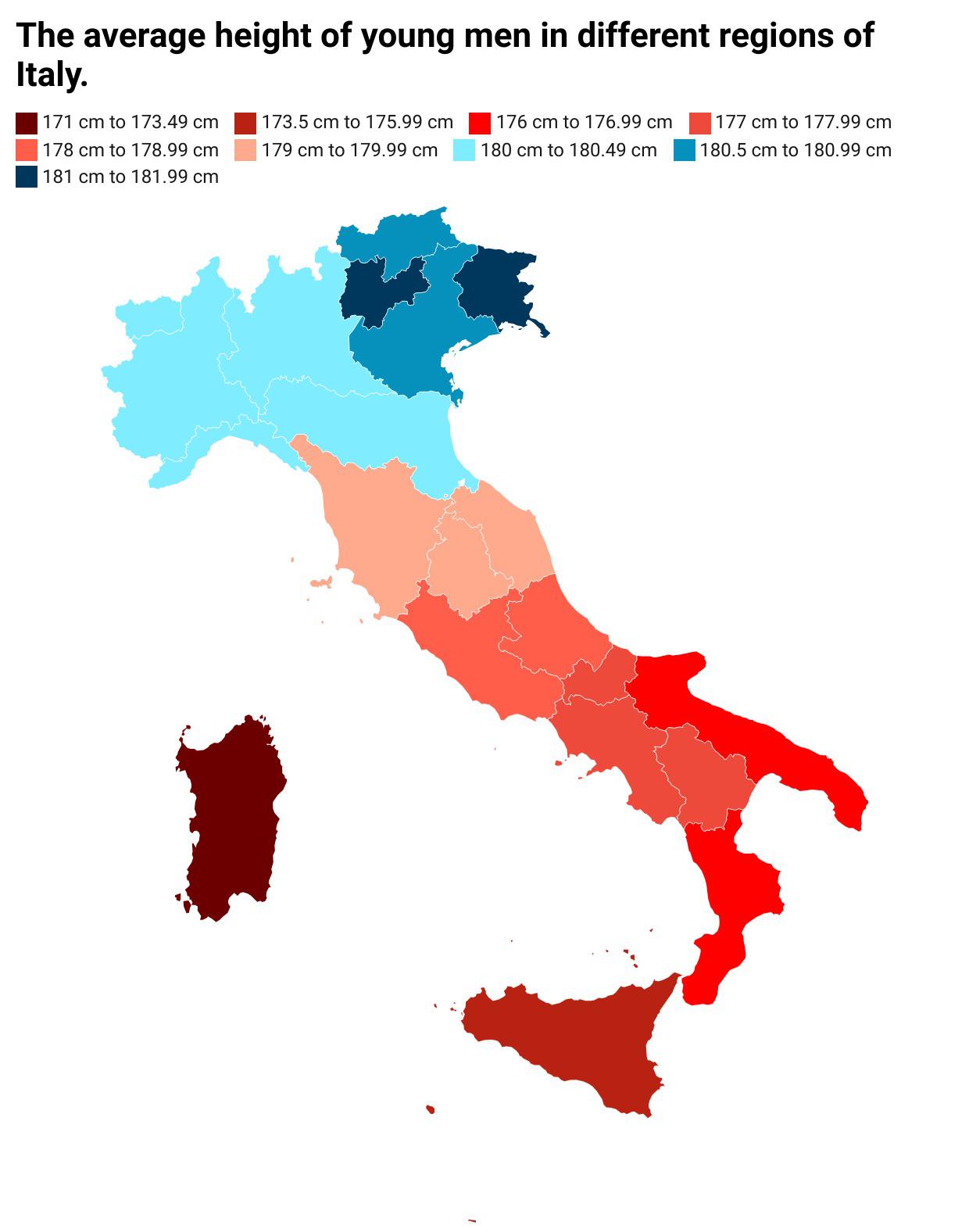
Italy is known for its rich culture, history, and vibrant lifestyle—but what about the physical characteristics of its population? One of the most discussed topics when comparing countries demographically is height. The average height in Italy provides useful insights into health trends, lifestyle habits, and even socio-economic developments across different regions of the country.While there are variations by region and age group, recent data suggests that the average height in Italy stands around 177 cm for men and 165 cm for women. These numbers show that Italians are slightly taller than the global average. Understanding the national averages helps in evaluating broader patterns, including health conditions, genetics, and environmental factors influencing physical development.
Table of Contents
ToggleAverage Height of Men in Italy
The average height for men in Italy is approximately 177 cm (5 feet 9.5 inches). This figure reflects recent national surveys and aligns closely with the European average. Men from northern regions like Lombardy and Veneto tend to be slightly taller compared to those from southern regions such as Sicily or Calabria. These regional differences can be linked to variations in nutrition, genetics, and lifestyle habits.Over the last few decades, there has been a noticeable increase in the average height for men in Italy, particularly among younger generations. Improvements in healthcare access, dietary quality, and awareness of physical fitness have played a role in this upward trend. While height still varies across socioeconomic classes, overall growth has remained steady.
Average Height of Women in Italy
The average height for women in Italy is around 165 cm (5 feet 5 inches), which is slightly above the worldwide average. Similar to men, women from northern Italy generally report taller statures than those in the south. This is largely due to similar factors such as regional dietary differences, economic opportunities, and genetic diversity within the population.Height among Italian women has also increased steadily over the past century. Educational campaigns promoting proper childhood nutrition and public health initiatives have supported this trend. Today, the average height for women in Italy reflects a combination of improved living standards and evolving lifestyle choices, both of which contribute to healthier physical development during adolescence.
Comparison with Other European Countries
When compared with neighboring countries, the average height in Italy is slightly lower than in some Northern European nations but higher than in many Southern or Eastern European countries. For instance, the average height in France is similar, with French men and women measuring approximately 179 cm and 164 cm respectively.These slight differences are often attributed to genetic background, socioeconomic conditions, and national dietary habits. Countries in Scandinavia, for example, generally report taller average heights, while Mediterranean countries show more modest figures. Italy’s position remains solidly within the European average range, indicating stable and healthy growth patterns over time.
Historical Changes in Average Height
The average height in Italy has changed significantly over the past century, reflecting improvements in living conditions and public health. In the early 20th century, both men and women in Italy were significantly shorter than today’s averages. Poor access to nutritious food, limited healthcare, and economic hardship were key contributing factors.Since the post-war period, height has increased steadily across generations. This positive trend is often seen as an indicator of general population health. As the Italian economy and healthcare system improved, so did the nutritional intake and physical development of children. These improvements have led to a gradual and consistent rise in average height across both genders.
Factors Affecting Height in Italy
A variety of factors influence the average height in Italy, ranging from genetic makeup to social and environmental conditions. While genetics play a primary role, external factors such as access to quality food, healthcare, and education are equally significant. The interplay of these elements determines not only individual height but also national averages.Regional differences in economic development also affect height. In wealthier northern areas, better healthcare and nutrition lead to taller average statures. In contrast, southern regions, which may face economic disparities, sometimes report slightly shorter average heights. Understanding these factors offers insight into broader patterns in public health and growth potential.Nutrition and Lifestyle
One of the most influential elements on height development in Italy is nutrition. A diet rich in protein, vitamins, and minerals during early childhood is vital for growth. Active lifestyles and regular exercise also contribute to healthy bone development, both of which are common in modern Italian culture.Genetics and Environment
Genetic factors largely determine height potential, but environmental conditions such as pollution, stress, and living standards can either support or hinder that potential. In Italy, regional diversity adds another layer of complexity, as people from different parts of the country carry varying genetic profiles that influence average height outcomes.
Op. Dr. Halil Buldu
Orthopedic Surgeon and specialist in Limb Lengthening & Deformity Correction with over 14 years of experiences
Author Page


